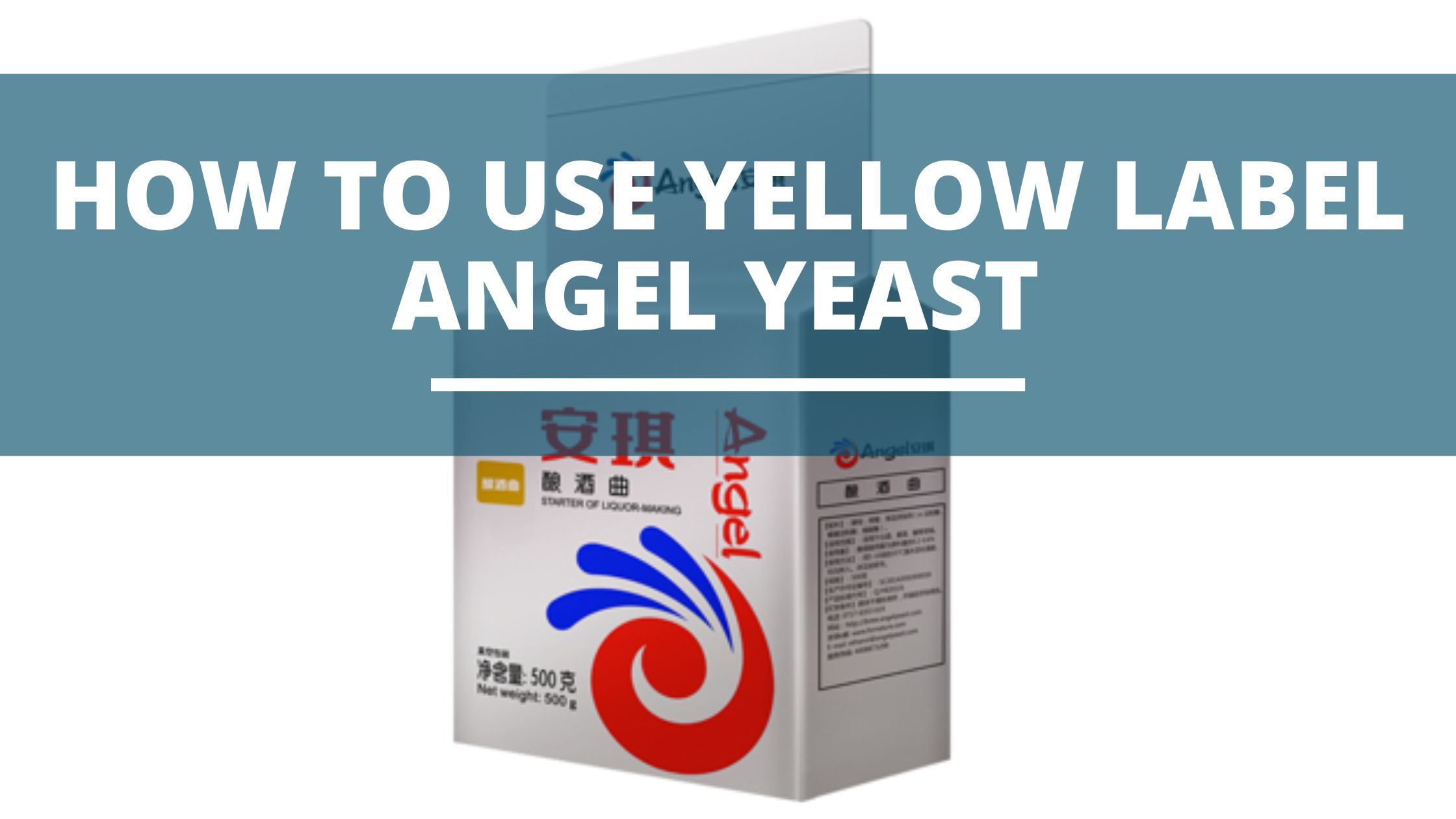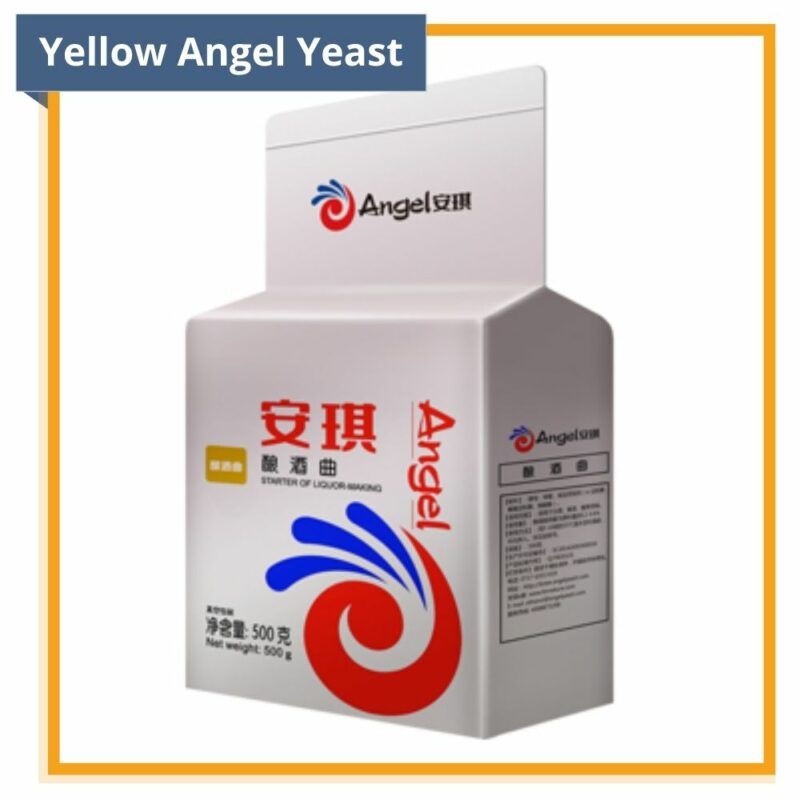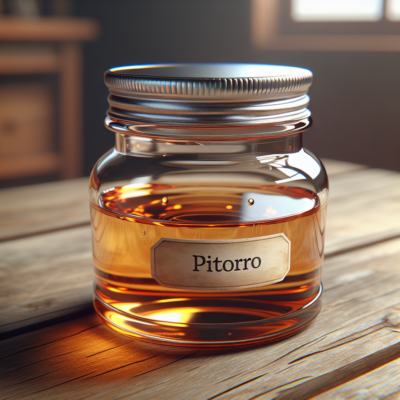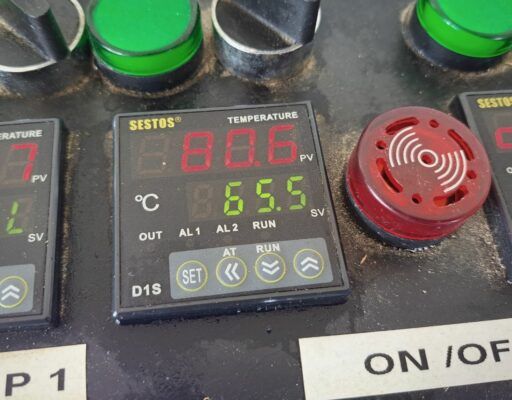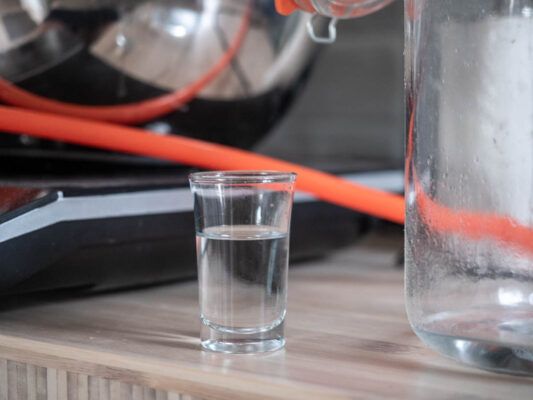Distilling 101, Fermentation, Ingredients, Yeast
Yellow Label Angel Yeast (A Distiller’s Guide To Angel Leaven)
Finding a suitable yeast can be a daunting task, as it can make or break a spirit’s flavor profile.
That’s where yellow label Angel yeast comes in.
This unique blend of fungi and enzymes is a popular choice amongst distillers because it has high alcohol tolerance and can produce a smooth spirit that allows other flavors to shine through. It works on both gelatinized and ungelatinized grain and won’t compromise the quality of your final product.
In this article, we’ll explore the characteristics of Angel Leaven and how it can help you create a superior product you’ll be proud of.
Table of Contents
First, What Is Yellow Angel Yeast?
Yellow Angel yeast is a strain designed to produce alcoholic beverages like whisky and vodka. It’s a high-quality product made from yeast extract, Saccharomyces cerevisiae, and enzymes–alpha-amylase, glucoamylase, phytase–and it’s revered for its ability to produce consistent, high-quality results.
The yeast’s properties simplify your production process because you can ferment your wash without boiling or mashing your grains.
Must Try: Yellow Label Angel Yeast
- Ferment wash without mashing your grains
- High alcohol tollerance
- High opperating temperature
- Cost effective
- Unique flavor profile
Where is Angel yeast made?
Angel yeast is made in China and headquartered in Yichang.
Who owns Angel yeast?
Yihai International Holding LTD. owns angel yeast.
What Is Angel Dry Yeast Used For?
Angel dry yeast is an excellent product if you’re looking to ease your fermentation process. You can use it to make whiskey, vodka, and rum.
It has also gained popularity across the globe.
In Asia, it’s a staple for producing Baiju and rice wines, while in Europe it’s used in whisky and vodka distillation. It has also become a trendy option for koji starters in various countries, including Russia and New Zealand.
Why Angel Yeast Is Awesome For Distilling?
Angel yeast is a fantastic choice if you’re looking to produce high-quality spirits consistently. Here are a couple of reasons we believe you should get your hands on the product.
- Consistent and high-quality fermentation: Angel Yeast provides high-quality strains designed to produce desired and consistent flavors and aromas in the final product.
- Improved yields: Because it’s efficient at converting starches into fermentable sugars, it allows you to produce more alcohol per batch.
- Cost-effective: It contains enzymes, so you don’t have to purchase additional nutrients and enzymes, saving you money in the long run.
How Does Yellow Label Angel Yeast Work?
Yellow-label angel yeast has a distinct composition of enzymes and nutrients that gives you the flexibility to ferment without having to boil and mash your grains. You can save time by skipping some traditional steps and still achieve a successful fermentation.
Where To Buy
You can purchase Yellow Label Angel Yeast from various online retailers and home brewing supply stores. Some online retailers that sell Yellow Angel Yeast are Amazon and eBay.
Must Try: Yellow Label Angel Yeast
- Ferment wash without mashing your grains
- High alcohol tollerance
- High opperating temperature
- Cost effective
- Unique flavor profile
How To Use Angel Yeast (Our Guide)
Angel yeast works similarly to baker’s yeast, only you can skip the mashing and boiling process if you wish to. There is some preparation you have to do, though. Whether you’re preparing an uncooked grain, solid, or liquid fermentation, below’s a detailed guide to getting started with Angel yeast.
1. Temperature range
Angel yeast works best at temperatures of between 30-32℃ (86-90℉). At lower temperatures the enzymatic conversion will be very inefficient so you’ll likely get a very low ABV ferment.
We recommend using a heater with a temperature controller like the STC-1000 to keep your ferment at 30 degrees.
2. Pitch rate
For every 13 kg (29 Ib), pitch 38-75g of Angel Yellow yeast.
3. Instructions
Solid fermentation:
You’ll Need
- 13 kg (28 lb) of rice, corn, or other grain
- 38-75g of Angel leaven (yellow label)
- 2-3 liters (68-101 oz) of 32-35℃ (90-95°F) water
- Stainless steel pot or steamer
- Large bowl
Method
- Pour the grain into the bowl and let it soak for 30-45 minutes.
- Transfer the grain to the pot and let it steam for 30 minutes.
- Pour it into the fermenter and let it cool to 24-28℃ (82-108°F).
- Dissolve Angel leaven into water.
- When the temperature reaches 28-30℃ (82-86°F), douse it on the grain mash.
- Stir well.
- Ferment for 4-15 days.
Liquid fermentation:
You’ll Need
- 13 kg (28 lb) of rice, corn, or other grain
- 38-75g of Angel leaven (yellow label)
- 650ml-1.3 liters (22-43 oz) of warm water (30-32℃ /86-90°F )
- Fermenter
Method
- Steam the grain for 30 minutes.
- Let it cool to 24-28℃ (82-108°F).
- Transfer into a fermenter and add water.
- Pitch the yeast.
- Stir for 10 minutes and seal.
- Ferment for 4-8 days.
Fermenting uncooked grain:
You’ll need
- 13 kg (28 lb) of rice, corn, or other grain
- 32-38 liters (8-10 gallons) of hot water
- Fermenter
Method
- Mill the grain.
- Pour the grain into the fermenter and top it with water
- When the temperature reaches 32℃ (90°F), pitch the yeast.
- Mix well.
- Ferment for 8-15 days.
- Mix twice every day for the first three days.
Summary
If you want to create high-quality spirits with minimal effort, yellow-label angel yeast is a game changer. With its robust blend of enzymes and nutrients, you can achieve optimal fermentation whether you pitch it to cooked or uncooked grains.
It effectively breaks down complex starches to produce a clean and flavorful spirit. If you’re looking to extend your library of high-attenuation yeasts, look no further than angel yeast; it’s worth the investment.
Yellow Label Angel Yeast: Frequently Asked Questions
Q. What temperature do you mix Angel yeast yellow label?
It’s best to mix Angel yeast yellow label at temperatures of between 30-32℃ (86-90℉).
Q. What is Angel yeast made from?
Angel yeast is made from a combination of yeast extract–Saccharomyces cerevisiae–and enzymes.
Q. How do you store angel yeast?
You should store angel yeast in a cool, dry, well-ventilated place below 20℃ (68℉).
Q. Who should not use brewer’s yeast?
If you are on any medication, it’s best to consult your doctor before you use brewer’s yeast, as it can interact with conventional medication. Also, if you experience frequent yeast infections or have any reactions to yeast, it’s best to avoid it.
Q. Is yeast in beer bad for your gut?
Yeast in beer is generally not bad for your gut. The strain used is Saccharomyces cerevisiae, and a study found it can treat irritable bowel syndrome symptoms–gas, diarrhea, and abdominal pain. But an overindulgence in beer can cause gut inflammation, resulting in conditions like acid reflux and flatulence.
Q. Which yeast is best for whiskey?
The best yeast for whiskey is one with a high attenuation rate. A few good ones include baker’s yeast and DistilaMax GW (Grain Whiskey).
Q. Which yeast is best for rum?
The best yeast for rum is baker’s yeast, Lavlin V1116 (K1), and DistilaMax RM (Rum).
Q. Does yeast go bad if not refrigerated?
Yeast doesn’t go bad if unrefrigerated, but it also depends on the type of yeast you use. If you’re using liquid yeast, it’s best to refrigerate it because it stores well in a very cool place.
You can store unopened dry yeast in the pantry. To extend its shelf life, keep it in the refrigerator once opened. Refrigerating allows the active cells to go dormant to retain their efficacy, and you can simply reactivate the yeast by warming it up at room temperature.

